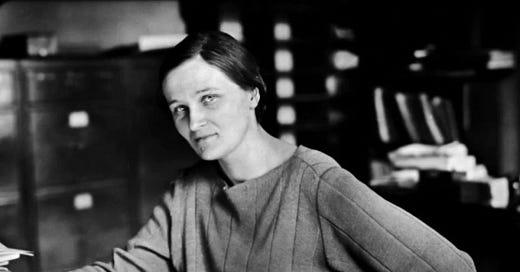Through articles like these Her Bridge Voice hopes to elevate previously unknown but amazing women.
Cecilia Payne was a trailblazer in the world of astronomy and astrophysics but because of her gender is rarely credited with her discoveries. Let's take a look at how she overcame obstacles to become the first woman to earn a Ph.D. in astronomy from Radcliffe College and make groundbreaking discoveries that changed our understanding of the composition of the universe.
In 1923, Payne won a scholarship at Cambridge University, but despite completing her studies, Cambridge refused to grant her a degree because there was very little precedent for women receiving such degrees at that time. Undaunted, Payne moved to the United States where she worked at Harvard University as an assistant professor of astronomy and eventually received her Ph.D. from Radcliffe College in 1925—the first woman ever to do so.
Payne made remarkable discoveries throughout her career, particularly concerning what the universe is composed of. She determined that hydrogen and helium were the primary elements found outside Earth's atmosphere—a conclusion that had previously been rejected by other scientists who believed it was impossible for lighter elements to exist in such abundance outside our planet's protective shell.
Payne’s discoveries revolutionized our understanding of the stars, which until then had been thought impossible to study due to their incredible distance from Earth. She also pioneered research into variable stars and became the first woman promoted within Harvard University when she was elevated from assistant professor to full professor in 1938.
Throughout her life, Cecilia Payne faced numerous hurdles due to her gender but still succeeded in becoming one of the most accomplished astronomers of all time. Despite being denied recognition during her lifetime—Henry Norris Russell is often given credit for discovering what the sun is made of even though he came four years after Payne—she has since been honored with numerous awards and accolades befitting her extraordinary accomplishments as an astronomer and scientist. Her story serves as an inspiration for other women looking to shatter glass ceilings in science or any other field they may pursue.
And it’s no surprise that Cecilia Payne was an avid bridge player apparently rivalling the skills of Albert Einstein whom she played against while playing at the Johnson Bridge Club in Cambridge where she was a regular.





